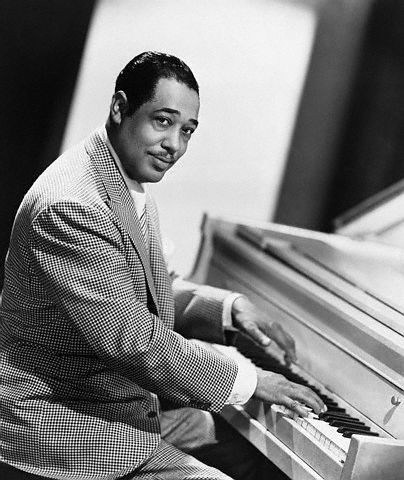Where is Jazz From?
Hey y'all, have you ever wondered where jazz music came from? As a music teacher I get asked about Jazz a lot. Jazz is one of the most popular and influential music genres in the world, but it's not always clear where it originated. In this article, we'll take a look at the history of jazz and explore its roots. From the streets of New Orleans to the speakeasies of Harlem, we'll trace the development of jazz music and discover the cultural influences that shaped it. So, if you're ready to learn more about jazz and its origins, keep reading!
Jazz originated in the city of New Orleans. It was created by African Americans who mixed African Rhythms with European instruments. It's a truly American art form.

Jazz: A Brief History
Jazz is a music genre that has its roots in the African American communities of the late 19th and early 20th centuries, particularly in the cities of New Orleans and Chicago. The origins of jazz can be traced back to the African rhythms and melodies that were brought over by enslaved Africans to the United States during the transatlantic slave trade. These rhythms and melodies were then blended with European musical traditions, such as the brass band music that was popular in New Orleans.
The earliest form of jazz was known as "New Orleans Jazz," and it emerged in the late 19th century in the city's red-light district, known as Storyville. This early form of jazz was heavily influenced by the brass band music that was popular in the city, and it featured a strong emphasis on improvisation. The first jazz bands were made up of African American musicians, who played in the city's brothels, dance halls, and on the streets.

As jazz began to gain popularity, it spread to other cities in the United States, such as Chicago and New York City. In these cities, jazz musicians began to experiment with different forms of the music, incorporating elements of blues, ragtime, and swing. This led to the development of different subgenres of jazz, such as swing and bebop. If you are ever interested in learn how to play music check out our music lessons in Plymouth and Canton.
The 1920s and 1930s were a golden age for jazz, as the music became increasingly popular with both African American and white audiences. During this time, jazz musicians such as Louis Armstrong, Duke Ellington, and Benny Goodman, became household names and helped to establish jazz as a respected and important music genre.

During the 1940s and 1950s, jazz began to evolve further, with the development of new subgenres such as cool jazz, hard bop, and free jazz. These new styles of jazz were characterized by more complex harmonies and rhythms, and they often featured more dissonant and experimental sounds.
Jazz continued to evolve and change throughout the 20th century, and it continues to be a vibrant and diverse music genre today. Jazz has also influenced many other music genres such as Blues, R&B, Soul, Funk, Pop, and even Rock.
Jazz has also been an important cultural movement, not just for the music it produced but for the social and political changes it brought about. Jazz musicians and fans have been at the forefront of the Civil Rights Movement, and jazz has been a significant part of the African American experience, representing freedom, expression, and resistance. I hope you enjoy this brief history of Jazz. It is probably my favorite type of music and I love to share facts about it.
Who was Duke Ellington?
Duke Ellington was one of the most important and influential jazz musicians of the 20th century. He was born in Washington D.C. in 1899, and began playing piano at a young age. He started his musical career as a pianist and bandleader in the 1920s, and quickly gained popularity for his innovative compositions and arrangements.
In 1927, Ellington and his band recorded their first hit, "East St. Louis Toodle-oo," which helped to establish them as one of the leading jazz bands of the time. Throughout the 1920s and 1930s, Ellington and his band performed at some of the most famous venues in the United States, such as the Cotton Club in Harlem and the Apollo Theater in New York City. They also made numerous recordings and appeared in several films.
One of the most notable aspects of Ellington's music was his innovative approach to arranging and composing. He was known for his ability to take a simple melody and turn it into a complex and dynamic work of art through his use of countermelodies, dissonant harmonies, and unexpected rhythmic shifts. He also wrote many extended compositions, such as "Black, Brown and Beige" and "The Far East Suite" which are considered milestones in jazz history.
I love Black, Brown and Beige. It's an amazing piece, Duke Ellington truly was a genius. Plus all the musicians playing in his orchestra were the best of the best.
Ellington's band was also notable for its long-standing members, many of whom stayed with him for decades. This allowed for a deep sense of cohesion and understanding among the musicians, and many of the band's recordings and performances were marked by a high level of spontaneity and improvisation.
Ellington's band and his music had a significant impact on jazz and popular music, and his compositions have been covered and reinterpreted by countless other musicians. He was also a pioneering figure in the integration of jazz, breaking barriers by hiring white and black musicians in the same band and performing for integrated audiences. He was also a notable figure in the Civil Rights Movement, often using his music as a platform for social and political commentary.
Ellington passed away in 1974, but his music continues to be celebrated and performed to this day. He was awarded the Presidential Medal of Freedom in 1969, and received a Grammy Lifetime Achievement Award in 1966. He was also inducted into the Down Beat Jazz Hall of Fame and the Songwriters Hall of Fame, among many other honors. Duke Ellington is considered one of the most important figures in jazz music and his contributions to the genre will always be remembered.
I hope you learned just a little bit about jazz from this article. Like I said before, it's my favorite music and I love to spread jazz knowledge. Thank you for reading to the end of the article. It means a lot to me.



